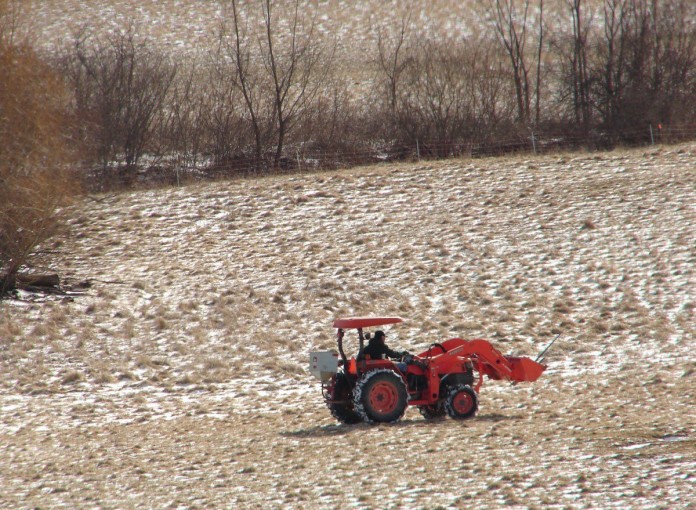WOOSTER, Ohio — Producers looking for an easy, inexpensive way to improve their pastures and hay fields can consider taking advantage of the still-frozen grounds and try frost seeding now for green pastures later.
Frost seeding is a method of broadcasting seed over frozen pastures to allow the seed to incorporate into the soil as the ground freezes and thaws, explained Rory Lewandowski, OSU Extension agriculture and natural resources educator in Wayne County.
This method is well suited to the transition between winter and spring because the natural freeze and thaw cycle occurring now helps to move the seed into good contact with the soil, he said.
It also saves producers money on fuel and equipment cost compared with using either a no-till or conventional drill, Lewandowski said.
Legume advantage
“The advantage to frost seeding a legume such as red or white clover is that legumes fix nitrogen typically in excess of their own needs, allowing the existing grass to use the excess nitrogen and improving their quality as a feedstuff,” he said.
Once legumes become uniformly established and make up 30 percent of the stand, there is no need to apply supplemental nitrogen, he added.
Frost seeding can also help producers increase their long-term profits by adding these legumes to their pastures, which provide better quality forage for livestock, Lewandowski said.
“It’ll offer livestock higher protein content and higher energy content, which results in better animal performance,” he said.
Legumes work better than grasses to frost seed, Lewandowski said.
Some of the most widely used legumes in Ohio for frost seeding include red clover and white clover. He said red clover is a popular choice for frost seeding because it has high seedling vigor, is tolerant of a wide range of soil pH and fertility conditions, and tolerates drought.
Seeding rates
Producers need to keep in mind the following seeding rates:
- Red clover: 6 to 8 pounds per acre
- Ladino or white clover: 2 to 3 pounds per acre
- Alsike clover: 2 to 4 pounds per acre
- Birdsfoot Trefoil: 4 to 6 pounds per acre
Other tips
When frost seeding a legume species that has not been grown in the pasture for a number of years, producers should include the proper bacterial inoculum to ensure that the bacteria responsible for fixing nitrogen become associated with the plant roots, Lewandowski said.
“The success of any new seeding depends upon soil fertility conditions, good seed/soil contact and the grazing management that will be used once that plant is up and growing,” he said.











Yep. Thanks for the tips. Here in NE Ohio, I’ve done just that with one of my fields.
Only problem is on sloping ground that if heavy rains come it may wash any seed away that hasn’t yet been “fixated” making dood seed-t-ground contact in the soil by the freeze/thaw cycle.
What about for horses? My horses absolutely hate clover and avoid it at all costs. Are there any suggestions for doing this with other grass types of grass seed?